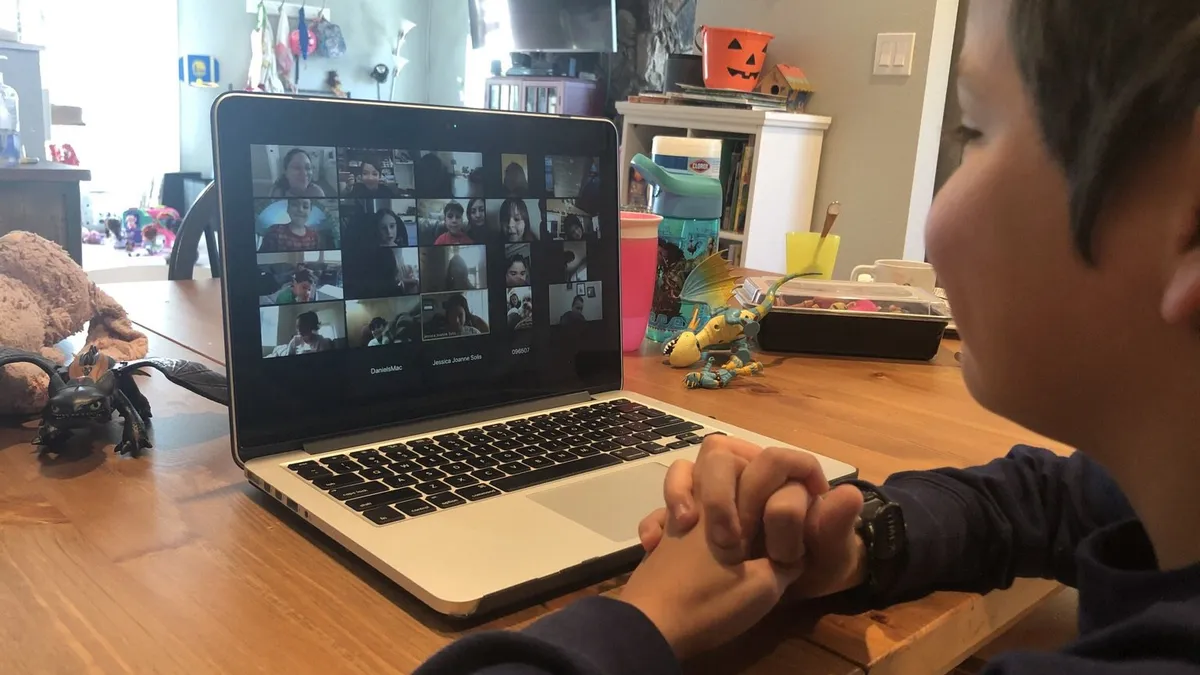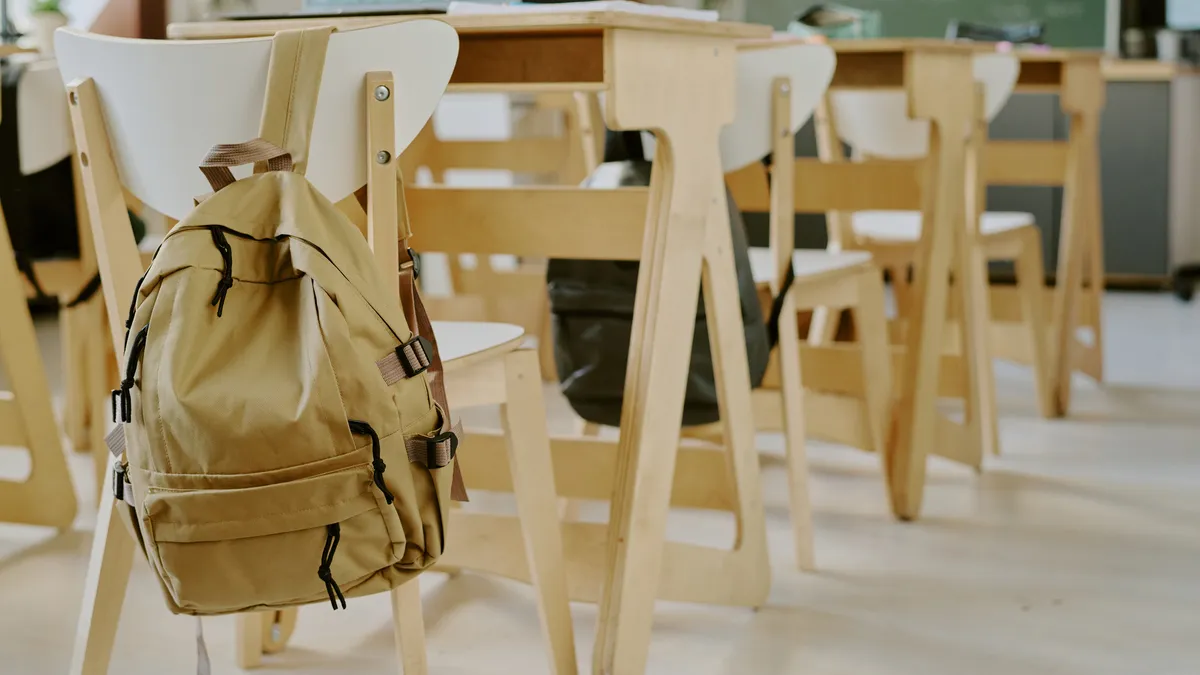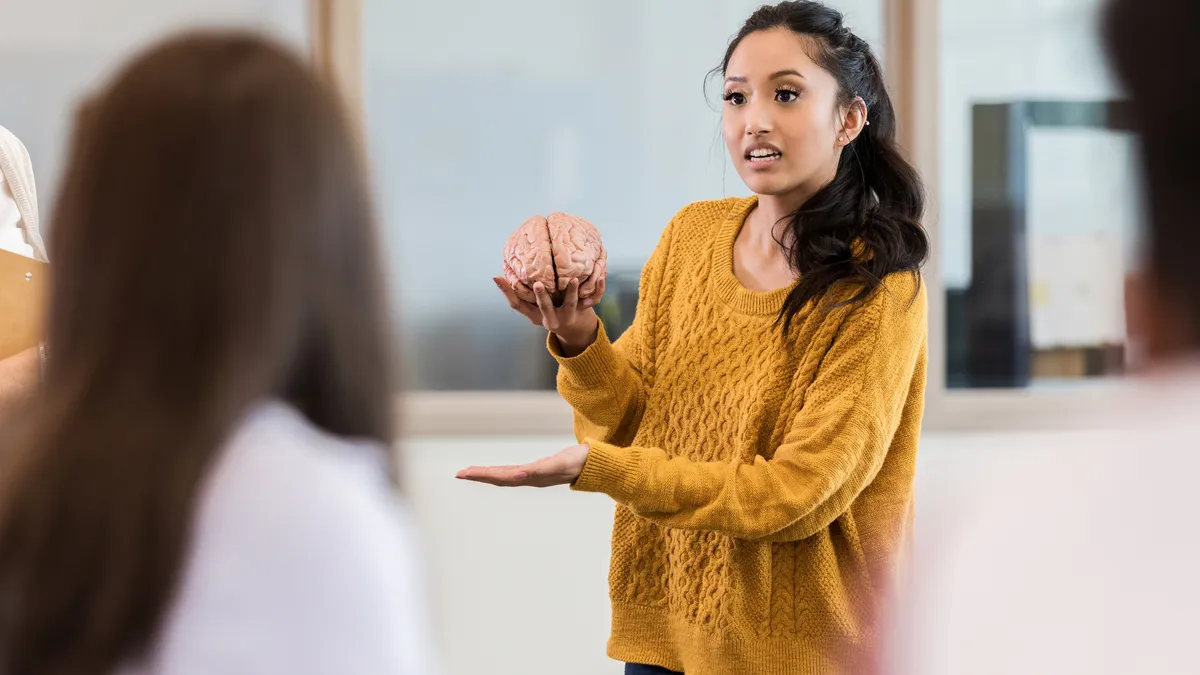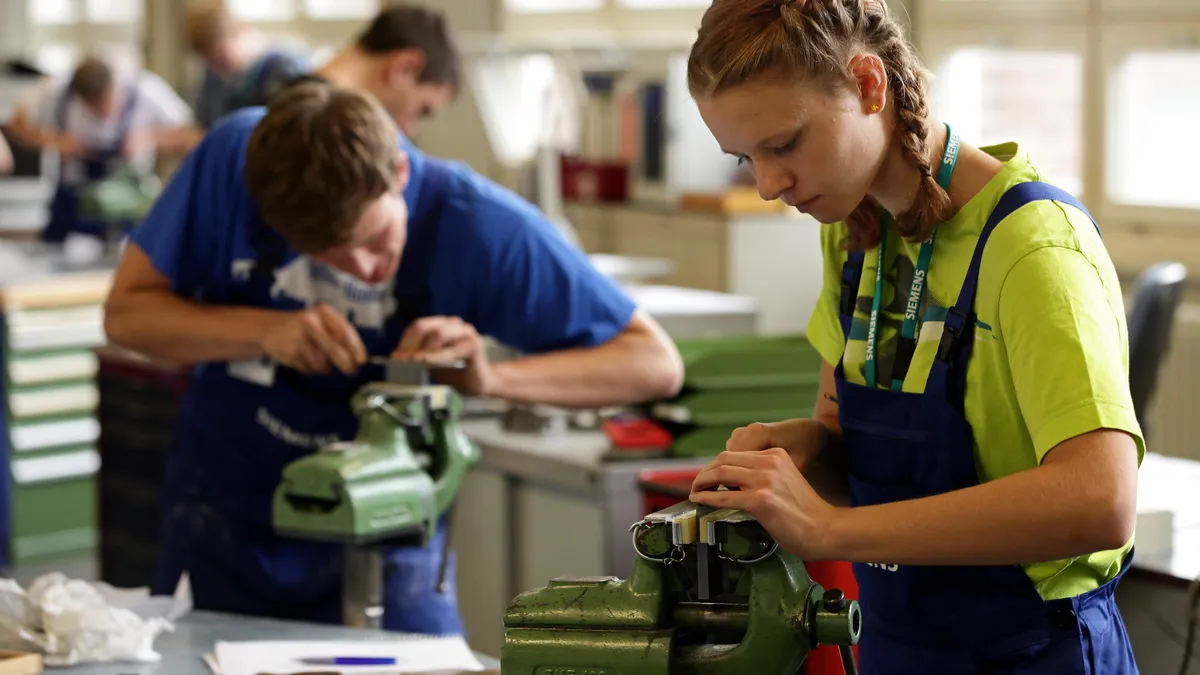In late February, Holbrook Language Academy in Concord, California, a two-way, Spanish and English dual immersion magnet school, held a workshop to educate parents about the domains of language learning — reading, writing, speaking, listening and thinking.
Principal Marga Marshall had no idea that a month later, schools would be closed because of the coronavirus, and parents would be supporting their children’s learning at home.
“The kids already have enough of a foundation. They can continue to work on that fluency,” Marshall says. But she recognizes while some parents are arranging video play dates for interaction, students will still miss out on opportunities to practice the “partner,” or non-native, language.
A normal schedule, in which students would learn half of the day in English and half in Spanish, has now been reduced to an hour or so through Zoom and as many bilingual videos and resources Marshall can find.
“My main thing is making sure that everybody is taking care of themselves,” she says. “It’s been super stressful for everybody.”
‘Without the eyes of the teacher’
Dual language immersion programs have been growing across the country and have been found to benefit both English learners and native English speakers. But with students out of school, experts say it will be difficult to replicate the environment in which students become fluent in two languages.
“Language learning is a dynamic process that requires a range of inputs — including interactions with teachers who are modeling the language and with your peers, who can also serve as language models and practice partners,” says Amaya Garcia, deputy director for English Learner education at New America, a Washington-based think tank. “While schools are closed, language immersion simply will not be possible at the same level.”
Portland Public Schools in Oregon has a large dual language immersion initiative, featuring not only Spanish, but also Chinese, Russian, Japanese and Vietnamese.
But not all students have devices and internet access at home — and finding outside, quality materials in some of the languages has been a challenge. So, Michael Bacon, director of the district’s Department of Dual Language, has been focusing more on building a library of digital resources, such as recordings of teachers reading, as well as analog materials for those who don’t have access.
The transition, he says, has already created more professional collaboration among teachers who rarely had a chance to get together in person. And the bank of materials will be useful when teachers are back in the classroom.
The question, he says, is, “How do we flip that around, and make sure it’s something that kids are really going to use without the eyes of the teacher on them?”
In learning a language, he says, “frequency trumps duration,” and it’s more important students are practicing the partner language some each day instead of for long periods on fewer days. But he adds many “emergent bilingual” students live in homes with the fewest resources and will “suffer the most.”
‘Amplify the language’
José Medina, an educational consultant and expert on dual language immersion programs, has been providing short professional development tips on social media to support educators and keep them motivated.
“Being a dual language educator is tough enough when we have the kids face to face,” he says. “There are so many forces that want to continue to strengthen and elevate only English.”
He recommends educators stick to the language allocation plan they have in the classroom. If it’s a 50/50 model, in which half of instruction is in English and half is Spanish or another “partner” language, they should still evenly split the time they have with students between the two languages — even if they’re only seeing students for less than an hour a day on a video call. If they are making assignments for the week, one would be in English and one would be in the partner language.
Teaching students in their homes is also an opportunity to “really connect and give value to what the kids live and breathe every day.” Teachers, he says, shouldn’t be going to websites to download worksheets that don’t connect to the tough issues families are currently facing. “It’s not job [of parents] to be dual language teachers.”
Finally, Medina says there are ways to emphasize the partner language even if students’ family members don’t speak it. In an English-speaking household, for example, students can watch a Spanish TV show or video and retell the information to their parents in English. Or a student in a Spanish-speaking household can do the same thing with a show in English.
“You’re forcing the kid to really amplify the language they practice least at home,” he says. This strategy, he adds, gives students a way to practice “cross-linguistic connections,” which will help students regain what they’ve lost more rapidly. Without those connections, educators, he says, are teaching “two monolingual programs.”
(1/2) In U.S. #schools, we thrive at negatively labeling #students who are considered at-risk. #SIFE & #SLIFE are particular labels that are prevalent & deficit based. Will we finally see that each child brings infinite possibility, regardless of #language & background? Or, now.. pic.twitter.com/eYTaQyOP6r
— Dr. José Medina (@JoseMedinaJr89) April 4, 2020
‘Stay the course’
There’s still the potential students’ development in their non-native language will be delayed.
“It will be extremely important for schools to assess children when they return to school," Garcia says, “in order to get a sense of where their language skills are and to make plans for how to build their skills back up.”
Medina has also received questions from teachers and administrators in schools that use a 90/10 allocation — in which kindergartners spend 90% of the time on the partner language and 10% on English — on whether it makes sense to repeat that model this fall instead of moving forward with their gradual, planned progression toward a 50/50 model in the upper grades.
Medina recommends teachers “stay the course” and use an “equity and social justice lens” in preparing for a return to school.
“What will need to change is the way we lesson plan to serve emergent bilingual students, who now all have interrupted formal schooling,” he says. “Only in this way, will we be able to effectively meet students' needs, regardless of any obstacles resulting from the COVID-19 school closures.”







 Dive Awards
Dive Awards















